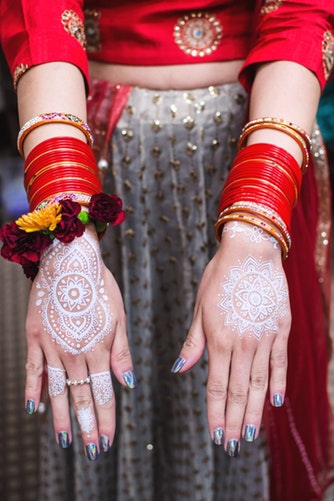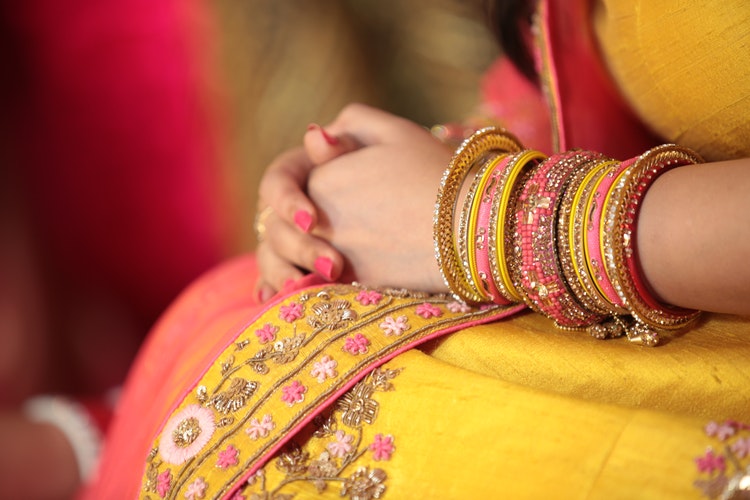The choora is usually red and white; sometimes the red bangles are replaced with another colour, but they are usually only two colours. They are traditionally made of ivory, with inlay work, though now made with plastic. Traditionally there are 21 bangles, although more recently the bride often wears 7, 9 or 11 bangles.
The choora ceremony (dahi-choora)is held on the morning of the wedding or the day before. The bride’s maternal uncle and aunt give her a set of chooriyan.

Bangles are traditionally a part of the solah shringar of Indian brides. It is mandatory for newlywed brides and would-be-brides to wear bangles made of glass, gold or other metals as they signify the long life of the husband. They signify good fortune and prosperity. Traditionally breaking of the bridal glass or lac bangles is considered inauspicious
Bangles have always been an integral part of Indian culture. No wonder, bangles compliment in so many of our film as well as folk songs. Let us take a look at what makes bangles such a special part of the Indian culture, especially for weddings.

Every region has a separate set of rituals that are associated with bangles. Would-be-brides wear the smallest possible bangles with the help of oil. This signifies that her married life would be full of love and affection.
- In the southern states, gold is considered extremely favourable. In some communities, the brides wear green coloured glass bangles along with the gold ones, since green signifies fertility and prosperity.
- In Bengal, a new bride wears a conch shell bangle and a red coral bangle, which are locally called shakha and pole. Apart from this, the mother-in-law gifts her daughter-in-law a gold plated iron bangle the moment she enters her new household.
- In Rajasthan and Gujarat, the brides wear such ivory bangles or chooda as well. In Gujarat, the bride’s maternal uncle gives her the chooda in a ceremony called camera, along with the bridal silk saree with the red border.
- In Punjab, brides-to-be wear ivory and red bangles called chooda. The maternal uncle of the bride gifts her a set of chooda. She is supposed to wear these bangles for a given period of time, and they can wear these for a minimum of forty days or longer depending on the individual family’s custom.
- In Maharashtra, the bridal chooda is significantly different. The brides wear green glass bangles in odd numbers. The green signifies creativity, new life, and fertility. They wear these along with solid gold bangles called patlya and carved kadas called tode. The gold bangles are usually gifted by the groom’s family.
Bangles are more than accessories for Indian women. They are a part of their identity.
